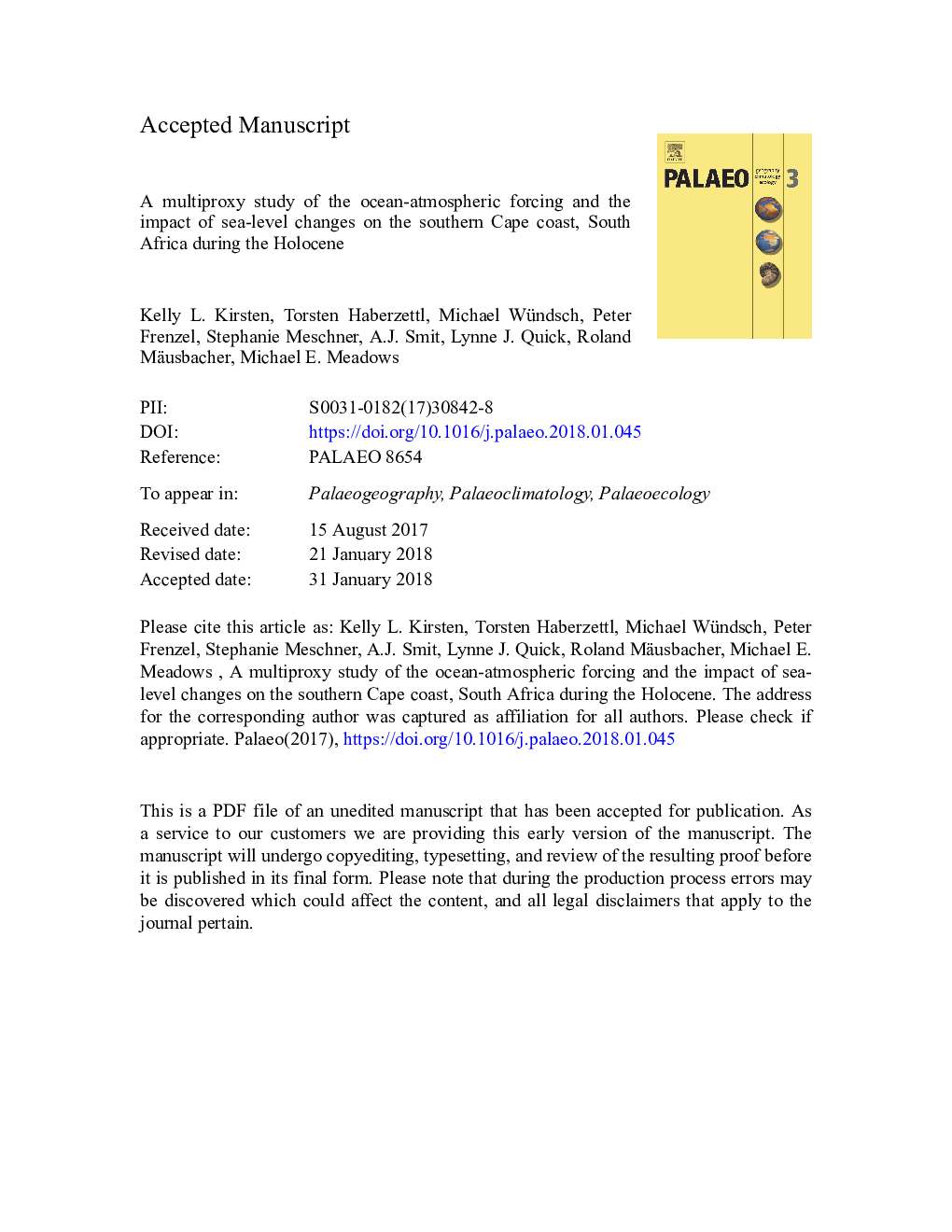| Article ID | Journal | Published Year | Pages | File Type |
|---|---|---|---|---|
| 8868302 | Palaeogeography, Palaeoclimatology, Palaeoecology | 2018 | 45 Pages |
Abstract
A multiproxy approach, focusing on biological proxies, was undertaken to determine the influence of sea-level changes along the southern Cape coast and the variability of water masses over the central Agulhas Bank region during the Holocene. A 30.47â¯m sedimentary core extracted from the coastal lake, Eilandvlei, shows continuous deposition for the last 9000â¯years. Microfossils were classified based on salinity and habitat, diatoms were further defined by their temperature preferences as either warm- or cold-water species. The composition of the assemblages is strongly linked to fluctuations in marine inflow into the system and the extent of freshwater inputs to the lake as recorded at the core site. Paleoproductivity improved during periods of equatorward migration of the westerlies, notably from 5800 to 5000â¯calâ¯yrâ¯B.P., when surface water mixing increased. Spectral analysis revealed periodicities associated with solar cycles, namely Gleissberg and De Vries. The system remained predominantly marine and submerged in response to an early-mid Holocene transgression until 4700â¯calâ¯yrâ¯B.P., when sea-level fluctuations and landscape modification restricted marine incursions, modified the exposed landscape and shifted the system toward a lagoon state. This multiproxy record provides insights into oceanic exchanges, surface water conditions and the mechanisms that govern them during the Holocene.
Related Topics
Physical Sciences and Engineering
Earth and Planetary Sciences
Earth-Surface Processes
Authors
Kelly L. Kirsten, Torsten Haberzettl, Michael Wündsch, Peter Frenzel, Stephanie Meschner, A.J. Smit, Lynne J. Quick, Roland Mäusbacher, Michael E. Meadows,
